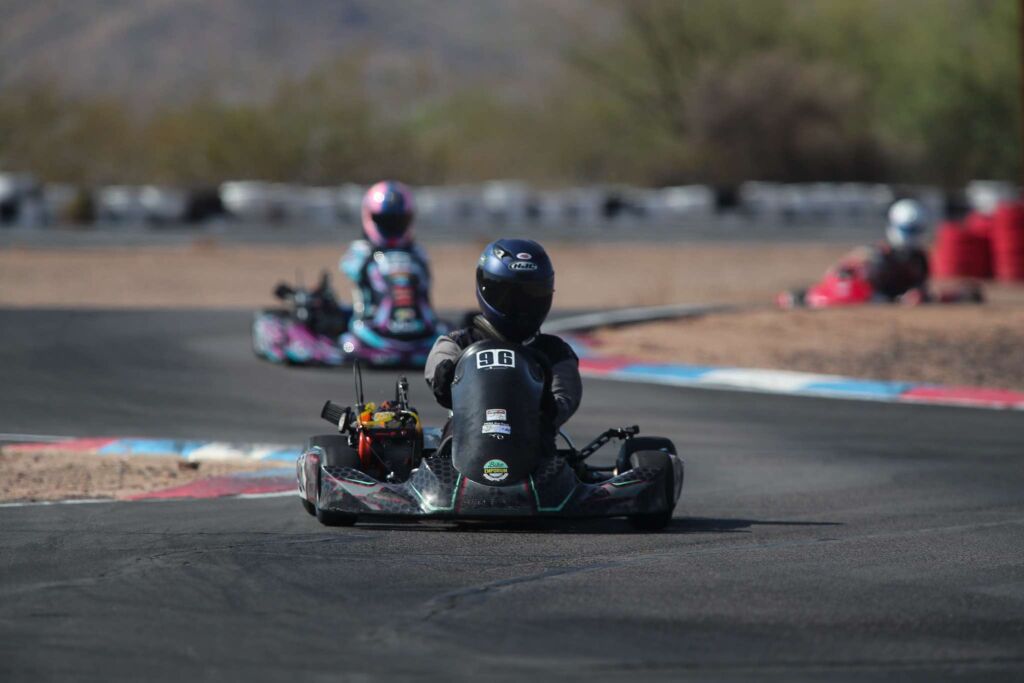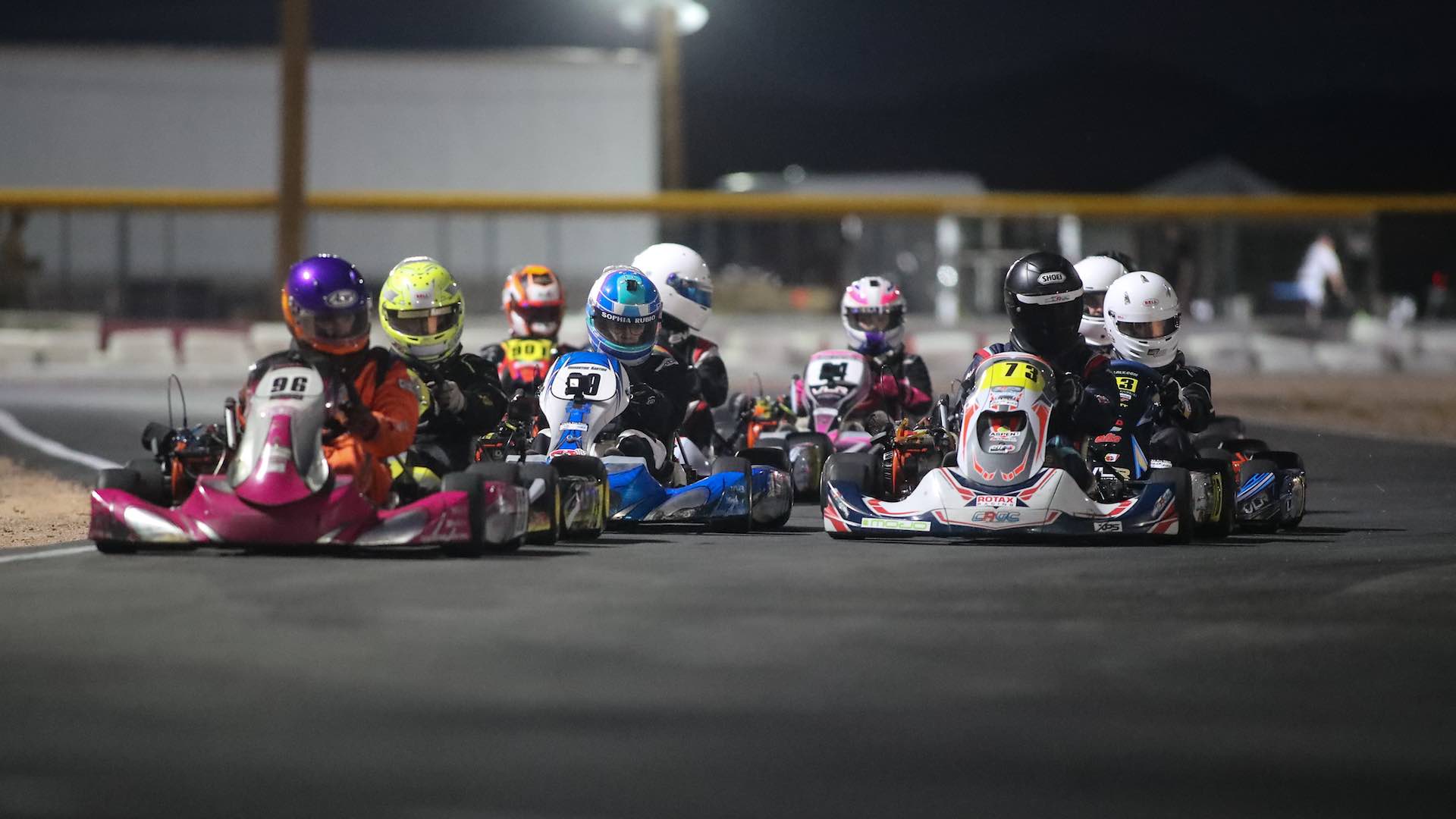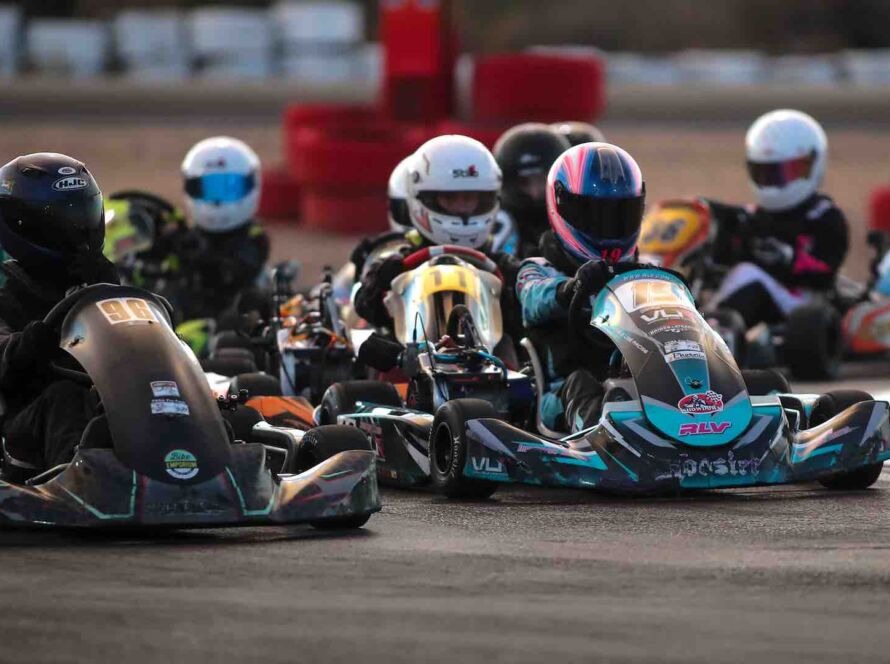Mastering the Track: A Driver’s Guide to Kart Circuit Analysis
In karting, raw speed alone isn’t enough to win races. The most successful drivers are the ones who learn to “read the track”—to understand its rhythm, layout, and the strategic opportunities it offers. Whether you’re new to karting or climbing through the ranks, developing track awareness is one of the most important skills you can master. Here’s how to break it down:
1. The Racing Line: Efficiency Over Aggression
The “racing line” is the path that allows you to carry the most speed through a corner and onto the next straight. It’s not about hugging the inside of the track—it’s about maximizing momentum.
- Entry: Approach wide to create the longest possible arc into the corner.
- Apex: Clip the inside of the turn at the optimal point—often the geometric center for mid-speed corners or slightly later for hairpins.
- Exit: Let the kart track out naturally to the outside edge of the circuit.
Consistency on the racing line is what separates the fastest laps from the rest. Study your own onboard footage or watch faster drivers to understand how they connect corners smoothly.
2. Braking Zones: Find the Threshold
Braking is more than just slowing down—it’s about control and positioning. In most corners, you’ll want to brake in a straight line before turning in. But how early (or late) you brake depends on grip levels, kart balance, and your own confidence.
Here’s how to refine your braking:
- Learn to “trail brake” slightly into corners to help rotate the kart (especially useful in low-grip conditions or with oversteer-friendly setups).
- Identify reference points like cones, signs, or track markings.
- Practice “threshold braking”—applying maximum brake pressure just before lockup.
- Avoid turning the wheel while braking heavily to prevent understeer or spinouts.

3. Corner Types & Track Flow
Not all corners are equal. Fast kinks, tight hairpins, long sweepers—all demand different approaches. Learn to categorize turns and adjust your inputs accordingly:
- Hairpins: Prioritize exit speed. Go deep, slow the kart down, and get a clean launch out.
- Chicanes: Stay tight, avoid scrubbing speed, and prepare for the next direction change.
- Long corners: Be patient. Don’t over-commit early; it will compromise your exit.
Understanding how each corner connects to the next helps you think in terms of track flow, not just isolated turns.
4. Track Conditions & Setup Adaptation
Every kart track has its quirks—surface type, elevation changes, temperature shifts—and these affect your kart’s setup.
Here’s what to look for:
- Bumpy track? Try softer tire pressures or wider rear track width for more stability.
- Fast, flowing layout? Consider reducing camber or narrowing the front end for better rotation.
- High heat? Expect more grip, but faster tire wear. Start slightly lower on tire pressure.
- Morning dew or rubbered-in surface? Adjust pressures and driving style accordingly.
Record setup changes between sessions, and match them to lap time trends. Over time, you’ll build your own karting “playbook.”
5. Walk the Track & Visualize
Before your first session, take a slow walk around the circuit. Look for:
- Subtle elevation changes
- Surface wear or bumps
- Curb placement and runoff
- Rubbered-in grip patches
Visualize each corner from the kart’s perspective. Picture your ideal line, braking points, and gear selection. This mental rehearsal sharpens focus before the engine ever fires up.
Final Thoughts
Reading a track is part science, part art. It’s a skill that deepens with every lap, every mistake, and every breakthrough. The more observant you become, the more confident—and competitive—you’ll be.
By mastering the racing line, dialing in your braking, and adjusting setup to match the circuit, you unlock a new level of control and pace. And that’s what takes you from just racing the track… to conquering it.



